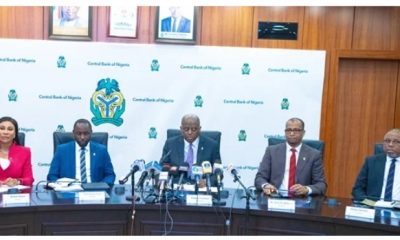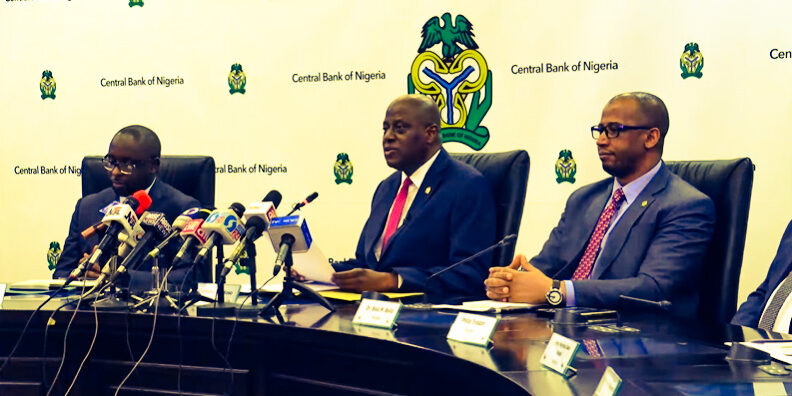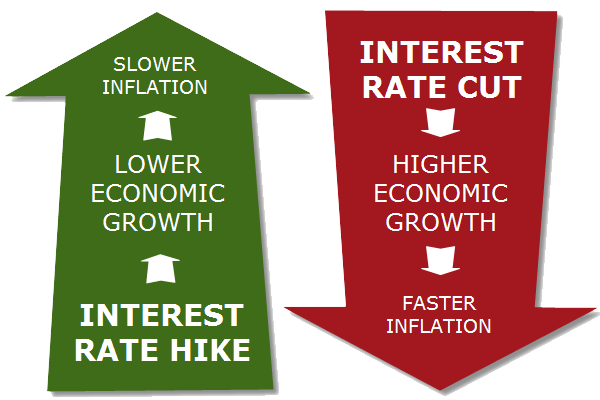Economy
MPC Meeting: Considerations and Policy Options
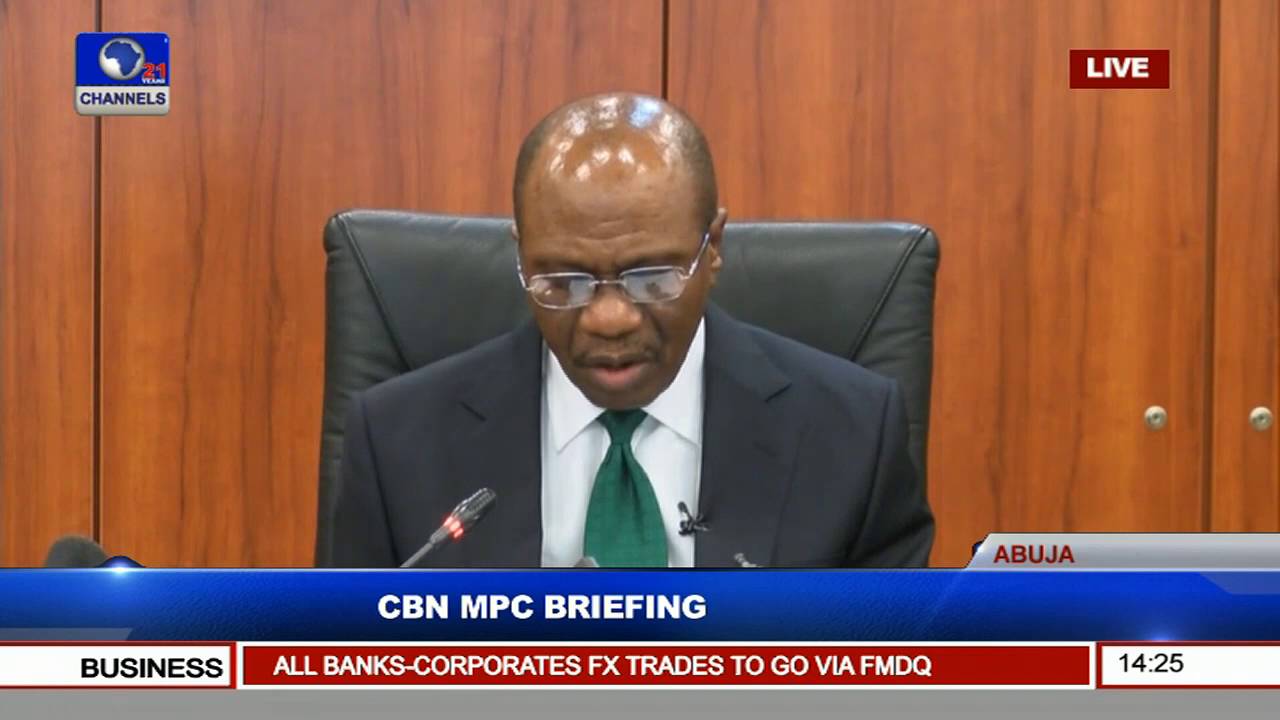
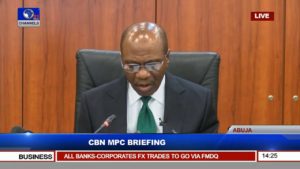
By FSDH Research
Is Expansionary Monetary Policy Appropriate?
We expect the Monetary Policy Committee (MPC) of the Central Bank of Nigeria (CBN) to hold rates at the current levels when it meets on January 23-24, 2017. Although the inflationary pressure and weak exchange rate justify a rate hike, it may be a difficult policy given the need to implement policies to boost growth in the economy.
The CBN will continue to use the Open Market Operations (OMO) to manage liquidity to achieve the desired goals in the short-term. At its November 2016 meeting, the MPC maintained the Monetary Policy Rate (MPR) at 14%, with the asymmetric corridor at +200 basis points and -700 basis points; retained the Cash Reserve Requirement (CRR) and Liquidity Ratio (LR) at 22.50% and 30% respectively.
The International Monetary Fund (IMF) stated that economic activity is projected to improve in 2017 especially in emerging market economies. This is contained in its latest World Economic Outlook (WEO) Update for January 2017. The IMF projects global growth at 3.4% in 2017, from an estimated growth of 3.16% in 2016. Advanced economies are projected to grow by 1.9% in 2017, from 1.6% in 2016, led by growth in the United States (U.S). The IMF projects a growth of 4.5% for the Emerging Markets and Developing Economies from an estimate of 4.1% in 2016, as policy stimulus and improvements in commodity prices aid growth.
The new administration in the U.S. led by Mr. Donald Trump has promised to embark on expansionary fiscal policy to build infrastructure and lower taxes. This policy may drive inflation rate in the U.S beyond the 2% target set by the Federal Open Market Committee (FOMC) of the U.S Federal Reserve (The Fed).
The FOMC may respond by a rate hike faster than earlier anticipated. Consequently, global yields may rise with a possible capital flight from other countries into the U.S. The appropriate monetary mitigant in Nigeria under this situation is a tight monetary policy.
The IMF estimates Gross Domestic Product (GDP) contraction in Nigeria in 2016 at 1.5%, but to grow by 0.8% in 2017. The Nigerian economy has been plagued with a number of macroeconomic issues, as well as insecurity in certain parts of the country that are now experiencing some relief. There is still foreign exchange shortages as a result of lower export revenue linked to the drop in oil price and production. There is an improvement in Nigeria’s economic outlook because of the increase in oil output and the impact of the supply cut by the Organization for Petroleum Exporting Countries (OPEC). In the short-term, a hold decision will be appropriate.
The inflationary pressure still persists in Nigeria, as we expect the January 2017 inflation rate to increase further from the December 2016 figure. The inflation rate increased in December 2016 to 18.55%, from 18.48% in November 2016. The inflation rate in the medium term would be driven by the base effect from previous higher prices, expected good food crop harvest and, possible increase in electricity tariff and pump price of Premium Motor Spirit (PMS). Given the outlook of inflation rate between now and the next MPC meeting, a rate cut will be counter-productive.
The decision of the OPEC and some non-OPEC countries for coordinated cuts in oil output agreed in
November 2016 has led to a significant boost to oil prices. The average price of Bonny Light was $54.21/b in December 2016, up by 19.27% from $45.45/b in November 2016.
The price of Bonny Light crude oil also increased by 17.44% to US$55.09b as at January 17, 2017 from US$46.91/b on November 22, 2016. The secondary data from the OPEC shows that Nigeria’s oil output decreased by 7.23% to 1.54mbd in December 2016, from 1.66mbd as at November 2016. The ongoing talks in the Niger Delta region and the provision for the amnesty programme in Budget 2017 could restore oil output.
The external reserves increased consistently after the last MPC meeting in November 2016. The 30-day moving average external reserves increased by 11.51% from $24.50bn as at November 22, 2016 to $27.32bn as at January 17, 2017. The increase in oil production from September 2016 up till November 2016 boosted the external reserves. The support from the African Development Bank (AfDB) contributed to the external reserves. A rate cut may lead to capital flight. Thus, we expect the MPC to hold rates while it awaits complementary fiscal policy support.
The Naira depreciated at the inter-bank and parallel markets between the last MPC Meeting and January 17, 2017. It recorded a marginal depreciation of 0.08% at the inter-bank market to close at $1/N305.25 on January 17, 2017 from $1/N305 on November 22, 2016. The premium between the inter-bank and parallel markets averaged about N181 after the last MPC meeting in November 2016. The parallel market rate also depreciated by 6.12% to $1/N498.50 on January 17, 2017 from $1/N468 on November 22, 2016. A rate cut may lead to further depreciation in the value of the Naira.
The average yields on the 182-day and 364-day Nigerian Government Treasury Bills (NTBs) increased to 19.17% and 22.98% in December 2016, compared with 19.11% and 22.85% respectively in November 2016.
The 91-day
NTB closed unchanged at 14.50% in December 2016. The yields on the NTBs sold on January 04, 2017 were at 14.51%, 19.17% and 22.98% on the 91-day, 182-day and 364-day NTBs, respectively. However, the average yield on the 16% June 2019; 16.39% FGN Bond January 2022 and 10% July 2030 increased to 15.65%, 15.71% and 15.86% in December 2016 from 14.99%, 15.26% and 15.61% in November 2016. They stood at 16.37%, 16.10% and 16.30% as at January 18, 2017. The increase in yields reflects the current rising inflation rate and weak exchange rate.
The monetary aggregates and credits to the private sector grew in the first ten months of the year, and above the target rates for 2016. The growth in credit was mainly from the impact of devaluation of the Naira. The broad money supply (M2) increased by 11.21% to N22.28trn in October 2016, from N20.03trn in December 2015; an annualized growth of 13.45%. The provisional growth benchmark for 2016 is 10.98%.
The narrow money (M1) grew by 16.94% to N10.02trn in October 2016, from the end-December 2015 figure. Net Domestic Credit (NDC) also grew by 23.89% in the same period; an annualized growth of 28.67%. The provisional benchmark growth for 2016 is 17.94%. The credit to government increased by 280.06% during the period.
Similarly, credits to the private sector grew by 23.24% for October 2016, compared with December 2015; an annualized growth of 27.89%. The benchmark growth for 2016 is 13.28%.
Looking at the economic developments in the country and the impact of the external developments on the Nigerian economy, we expect the MPC to hold rates at the current levels. If the peace in the Niger Delta region is maintained, oil output may increase. This will increase exports and inflow of foreign exchange.
The need for the Federal Government Nigeria (FGN) to borrow aggressively may reduce and interest rate and inflation rate may drop. All these may take a couple of months to happen.
Economy
LCCI Raises Eyebrow Over N15.52trn Debt Servicing Plan in 2026 Budget

By Adedapo Adesanya
The Lagos Chamber of Commerce and Industry (LCCI) has noted that the N15.52 trillion allocation to debt servicing in the 2026 budget remains a significant fiscal burden.
LCCI Director-General, Mrs Chinyere Almona, said this on Tuesday in Lagos via a statement in reaction to the nation’s 2026 budget of N58.18 trillion, hinging the success of the 2026 budget on execution discipline, capital efficiency, and sustained support for productive sectors.
She noted that the budget was a timely shift from macroeconomic stabilisation to growth acceleration, reflecting growing confidence in the economy.
She lauded its emphasis on production-oriented spending, with capital expenditure of N26.08 trillion, representing 45 per cent of total outlays, and significantly outweighing non-debt recurrent expenditure of N15.25 trillion.
According to Mrs Almona, this composition supports infrastructure development, industrial expansion, and productivity growth.
However, she explained that the N15.52 trillion allocation to debt servicing underscored the need for stricter borrowing discipline, enhanced revenue efficiency, and expanded public-private partnerships to safeguard investments that promote growth.
She added that a further review of the 2026 budget revealed relatively optimistic macroeconomic assumptions that may pose fiscal risks.
“The oil price benchmark of $64.85 per barrel, although lower than the $75.00 benchmark in the 2025 budget, appears optimistic when compared with the 2025 average price of about $69.60 per barrel and current prices around $60 per barrel.
“This raises downside risks to oil revenue, especially since 35.6 per cent of the total projected revenue is expected to come from oil receipts.
“Similarly, the oil production benchmark of 1.84 million barrels per day is significantly higher than the current level of approximately 1.49 million barrels per day.
“Achieving this may be challenging without substantial improvements in security, infrastructure integrity, and sector investment,” she said.
Mrs Almona said the exchange rate assumption of N1,512 to the Dollar, compared with N1,500 in the 2025 budget and about N1,446 per Dollar at the end of November, suggests expectations of a mild depreciation.
She said while this may support Naira-denominated revenue, it also increases the cost of imports, debt servicing, and inflation management, with broader macroeconomic implications.
The LCCI DG added that the inflation projection of 16.5 per cent in 2026, up from 15.8 per cent in the 2025 budget and a current rate of about 14.45 per cent, appeared optimistic, particularly in a pre-election year.
She also expressed concern about Nigeria’s historically weak budget implementation capacity, likely to be further strained by the combined operation of multiple budget cycles within a single year.
Looking ahead, Mrs Almona identified agriculture and agro-processing, manufacturing, infrastructure, energy, and human capital development as key drivers of growth in 2026.
She said that unlocking these sectors would require decisive execution—scaling irrigation and agro-value chains, reducing power and logistics costs for manufacturers, and aligning education and skills development with private-sector needs.
The LCCI head stressed the need to resolve issues surrounding the Naira for crude, increase the supply of oil to local refineries to boost local refining capacity and conserve the substantial foreign exchange used for fuel imports.
“Overall, the 2026 Budget presents a credible opportunity for Nigeria to transition from recovery to expansion.
“Its success will depend less on the size of allocations and more on execution discipline, capital efficiency, and sustained support for productive sectors.
Economy
Customs Street Chalks up 0.12% on Santa Claus Rally

By Dipo Olowookere
The Nigerian Exchange (NGX) Limited witnessed Santa Claus rally on Wednesday after it closed higher by 0.12 per cent.
Strong demand for Nigerian stocks lifted the All-Share Index (ASI) by 185.70 points during the pre-Christmas trading session to 153,539.83 points from 153,354.13 points.
In the same vein, the market capitalisation expanded at midweek by N118 billion to N97.890 trillion from the preceding day’s N97.772 trillion.
Investor sentiment on Customs Street remained bullish after closing with 36 appreciating equities and 22 depreciating equities, indicating a positive market breadth index.
Guinness Nigeria chalked up 9.98 per cent to trade at N318.60, Austin Laz improved by 9.97 per cent to N3.20, International Breweries expanded by 9.85 per cent to N14.50, Transcorp Hotels rose by 9.83 per cent to N170.90, and Aluminium Extrusion grew by 9.73 per cent to N16.35.
On the flip side, Legend Internet lost 9.26 per cent to close at N4.90, AXA Mansard shrank by 7.14 per cent to N13.00, Jaiz Bank declined by 5.45 per cent to N4.51, MTN Nigeria weakened by 5.21 per cent to N504.00, and NEM Insurance crashed by 4.74 per cent to N24.10.
Yesterday, a total of 1.8 billion shares valued at N30.1 billion exchanged hands in 19,372 deals versus the 677.4 billion shares worth N20.8 billion traded in 27,589 deals in the previous session, implying a slump in the number of deals by 29.78 per cent, and a surge in the trading volume and value by 165.72 per cent and 44.71 per cent apiece.
Abbey Mortgage Bank was the most active equity for the day after it sold 1.1 billion units worth N7.1 billion, Sterling Holdings traded 127.1 million units valued at N895.9 million, Custodian Investment exchanged 115.0 million units for N4.5 billion, First Holdco transacted 40.9 million units valued at N2.2 billion, and Access Holdings traded 38.2 million units worth N783.3 million.
Economy
Yuletide: Rite Foods Reiterates Commitment to Quality, Innovation

By Adedapo Adesanya
Nigerian food and beverage company, Rite Foods Limited, has extended warm Yuletide greetings to Nigerians as families and communities worldwide come together to celebrate the Christmas season and usher in a new year filled with hope and renewed possibilities.
In a statement, Rite Foods encouraged consumers to savour these special occasions with its wide range of quality brands, including the 13 variants of Bigi Carbonated Soft Drinks, premium Bigi Table Water, Sosa Fruit Drink in its refreshing flavours, the Fearless Energy Drink, and its tasty sausage rolls — all produced in a world-class facility with modern technology and global best practices.
Speaking on the season, the Managing Director of Rite Foods Limited, Mr Seleem Adegunwa, said the company remains deeply committed to enriching the lives of consumers beyond refreshment. According to him, the Yuletide period underscores the values of generosity, unity, and gratitude, which resonate strongly with the company’s philosophy.
“Christmas is a season that reminds us of the importance of giving, togetherness, and gratitude. At Rite Foods, we are thankful for the continued trust of Nigerians in our brands. This season strengthens our resolve to consistently deliver quality products that bring joy to everyday moments while contributing positively to society,” Mr Adegunwa stated.
He noted that the company’s steady progress in brand acceptance, operational excellence, and responsible business practices reflects a culture of continuous improvement, innovation, and responsiveness to consumer needs. These efforts, he said, have further strengthened Rite Foods’ position as a proudly Nigerian brand with growing relevance and impact across the country.
Mr Adegunwa reaffirmed that Rite Foods will continue to invest in research and development, efficient production processes, and initiatives that support communities, while maintaining quality standards across its product portfolio.
“As the year comes to a close, Rite Foods Limited wishes Nigerians a joyful Christmas celebration and a prosperous New Year filled with peace, progress, and shared success.”
-

 Feature/OPED6 years ago
Feature/OPED6 years agoDavos was Different this year
-
Travel/Tourism9 years ago
Lagos Seals Western Lodge Hotel In Ikorodu
-

 Showbiz3 years ago
Showbiz3 years agoEstranged Lover Releases Videos of Empress Njamah Bathing
-

 Banking8 years ago
Banking8 years agoSort Codes of GTBank Branches in Nigeria
-

 Economy3 years ago
Economy3 years agoSubsidy Removal: CNG at N130 Per Litre Cheaper Than Petrol—IPMAN
-

 Banking3 years ago
Banking3 years agoFirst Bank Announces Planned Downtime
-

 Banking3 years ago
Banking3 years agoSort Codes of UBA Branches in Nigeria
-

 Sports3 years ago
Sports3 years agoHighest Paid Nigerian Footballer – How Much Do Nigerian Footballers Earn



